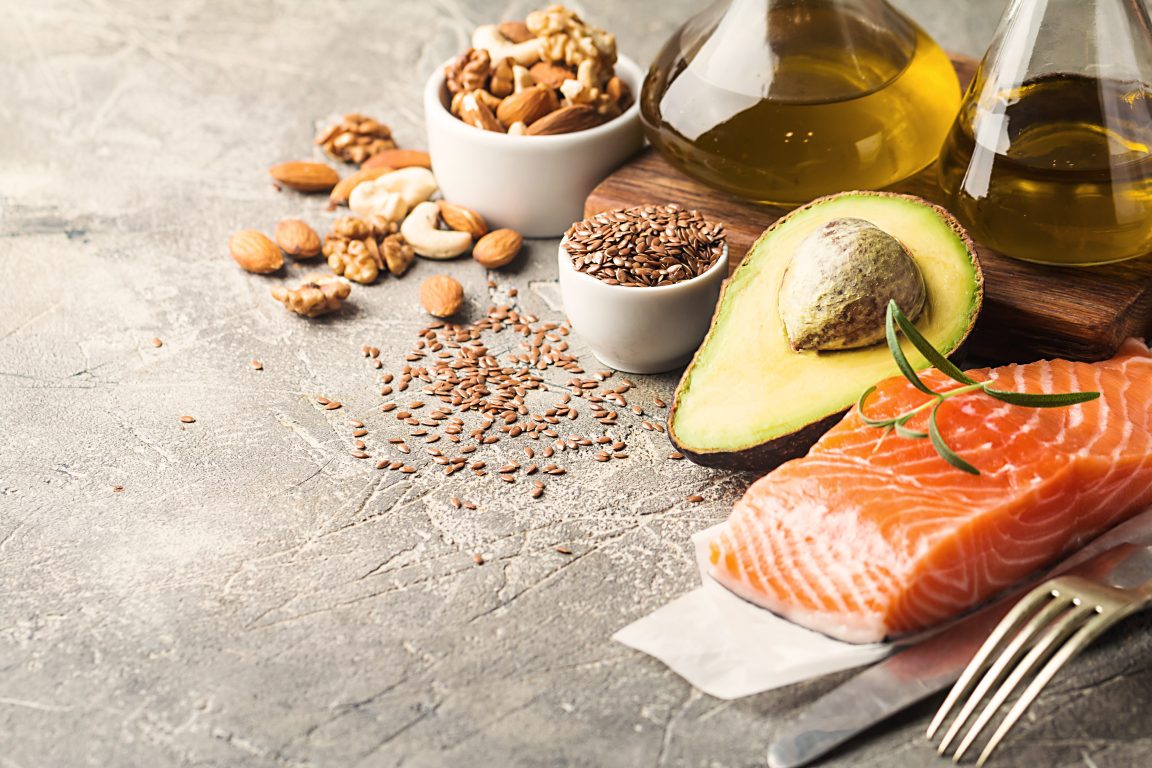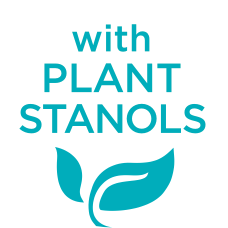Latest insights on evidence-based dietary approaches for cholesterol reduction

Cardiovascular disease (CVD) is the collective umbrella term that encompasses all disease states affecting the heart or blood vessels, with coronary artery disease being the most prevalent. CVD is the primary cause of death worldwide [1], and in the UK, over 10% of the population are living with CVD, with a quarter of all deaths attributable [2].
The landmark longitudinal Framingham Heart Study which was established in 1948 enabled identification of risk factors for CVD, divided into non-modifiable (e.g., age, family history, ethnicity) and modifiable factors (e.g., hypercholesterolemia, hypertension, physical inactivity, obesity, diabetes mellitus, alcohol intake) [3].
Cholesterol is a waxy fat-like substance derived from two sources – exogenous dietary cholesterol and endogenous de novo synthesised cholesterol. While cholesterol plays a fundamental role in the maintenance of membrane permeability and fluidity, as well as synthesis of steroid hormones, bile acids and vitamin D, it is well established that an increase in total blood cholesterol concentrations above the normal range (<5mmol/L) significantly increases risk of CVD [4].
Lipids are insoluble in water; thus, lipoproteins serve as vehicles for transportation of cholesterol (in addition to triglycerides and other fat-soluble components) in the circulation. Low density lipoproteins (LDL) transport cholesterol to peripheral tissues, whereas high density lipoproteins (HDL) are responsible for the reverse cholesterol transport from peripheral tissues. If blood LDL-cholesterol (LDL-C) is elevated, cholesterol can deposit in the arterial lumen leading to plaque formation and narrowing of the blood vessels – the hallmark feature of atherosclerosis. Research has also demonstrated that sub-clinical atherosclerosis is frequent even in those individuals with LDL-C levels within the target range (<3mmol/L) [5-7].
In view of the plethora of evidence demonstrating clinical efficacy and safety, a high-intensity statin, defined as the dose at which a reduction in LDL-cholesterol of >40% is achieved, is considered first line treatment for LDL-C lowering [8]. Notwithstanding the unquestionable benefits, there remains limitations with statins including possible mild side effects such as musculoskeletal symptoms and potentially higher risk of certain health conditions such as haemorrhagic stroke [9].
A key influencing factor on blood cholesterol levels is dietary saturated fat intake, thus potentially increasing risk of CVD [10]. This article will explore latest insights on evidence-based dietary approaches for blood cholesterol reduction.
Evidence based dietary approaches for CVD risk reduction
The emergence of different dietary approaches with a plant-based ethos are not only important for cardiovascular health [11-14] but also planetary health [15]. In the UK, there has been a seismic shift in the number of people adopting meat-free or meat-reduced diets. Approximately a quarter of the population follow some form of plant-based eating; 1-2% vegan, 5-10% vegetarian, 15-20% flexitarian [16]. Some plant-based dietary approaches have similarities regarding what they recommend and have been associated with CVD prevention and/or reduced risk of CVD events (Table 1).
Table 1: Overview of Dietary Approaches for the Management of Risk Factors for Cardiovascular Health
| Dietary approach | Explanation | Research |
| ‘DASH* Diet
Dietary Approaches to Stop Hypertension
|
Limits sodium to 2300mg/d (1 tsp salt). Focuses on foods rich in potassium/magnesium/calcium. Limits red meat, sugars, and saturated fat.
|
Improvements in cardiovascular risk factors [17]. Protective against CVD, CHD, stroke, and heart failure risk [18]. Significant reductions in total cholesterol and LDL-C [19]. Modest adherence associated with lower risk of all-cause/cause-specific mortality [20]. Higher adherence confers reduced risk of coronary artery disease [21] |
|
Mediterranean Diet
|
Varies by country/region. Inspired by the eating habits of people who live near the Mediterranean Sea (e.g., Greece, Spain etc.).
|
Protective effect on risk of CVD, including CHD and ischemic stroke [22]. Beneficial role on CVD prevention [23] and associated with lower risk of CVD incidence/mortality [24]. Improved survival in people with history of CVD [25]. |
|
Flexitarian Diet
|
The flexitarian dietary approach is plant-based incorporating some animal/fish protein. | Lower CVD-related risk factors (e.g., LDL-C). Observational studies support their role in prevention of CVD [26, 27]. Associated with decreased total cholesterol, LDL-C, HDL-C [28]. |
|
Nordic Diet
|
A modern style of eating based around traditional Scandinavian cuisines. Focus is on sustainable, local, seasonal foods. | Improvements in blood pressure/some blood lipid markers [29]. Inverse association with risk of mortality [30]. Adherence to diet and cardiometabolic risk factors are equivocal [31] |
|
Portfolio Diet
|
A dietary approach to specifically lower cholesterol. Based on eating a ‘portfolio’ of foods shown to help lower cholesterol. | Significant improvements in LDL-C, cardiometabolic risk factors and estimated 10-year CHD risk [32]. High adherence associated with reduction in cardiovascular events [33]. |
An important dietary component to consider in the context of cholesterol, a risk factor of coronary heart disease, are plant stanols. Plant stanols are naturally occurring compounds found in small amounts in plant-based foods (e.g., wholegrains, vegetable oils, nuts, seeds, fruit, vegetables). These amounts from food alone do not result in clinically meaningful outcomes on blood cholesterol and subsequent CVD prevention and/or reduced risk. Hence, there is emphasis on the importance of incorporating foods with added plant stanols (e.g., spreads, yogurts, yogurt drinks).
Overview of plant stanols and reduction of LDL-cholesterol
Plant stanols are structurally similar to cholesterol. It has been suggested they decrease plasma cholesterol concentration by:
- Reducing small intestinal absorption of cholesterol (plant stanols interfere with the solubilisation of cholesterol i.e., the incorporation of cholesterol into mixed micelles). 2. Upregulating hepatic expression of the LDL receptors.
- Decreasing production of endogenous LDL-cholesterol [34, 35].
Emerging evidence suggests that plant stanols may have additional health benefits, that have to date been largely unnoticed, including interactions with the innate and adaptive immune system [36].
Achieving the recommended amounts of plant stanols in the diet is unobtainable. In fact, a typical Westernised diet contains a very small amount of plant stanols (20-30mg/d). In contrast, foods with added plant stanols (aiming for approximately 2g/day with meals) are clinically effective in lowering LDL levels by an average of 10% in 2-3 weeks. Furthermore, a daily intake of plant stanols reduces serum total cholesterol and LDL-C dose dependently from 7-12.5% on average, with no effect on HDL cholesterol [37-40].
Cholesterol reduction can be sustained with daily intake however plant stanol ester must be consumed daily to gain long term benefits [41]. This effect is in addition to that obtained with a low-fat diet or use of statins [42]. Thus, consuming foods with added plant stanols is an important consideration for certain patient groups who require appropriate dietary intervention to reduce risk of CVD-related events. The European Society of Cardiology (ESC) (2021) [42] recommendations for the patient groups in which food with added plant stanols (aiming for approximately 2g/day with meals) may be considered include:
- Patients at intermediate risk of CVD who are not on statins
- Patients on statins who do not reach their LDL targets
- Patients with familial hypercholesterolemia
The LDL-lowering effect of plant stanols has been summarised in several reviews and meta-analyses of randomised controlled trials and is considered one of the most established cholesterol-lowering functional food ingredients globally [43-47].
In clinical practice, it is also important to consider plant stanol use for other at-risk groups (e.g., menopausal women, overweight/obesity, family history of CVD, diabetes) that could benefit from cholesterol lowering interventions.
Conclusion
Dietary approaches are the cornerstone of strategies to lower blood cholesterol levels. A complementary plant-based diet approach that focuses on CVD prevention and/or reduced risk is fundamental. A flexitarian approach that encourages plant-based meals, but that doesn’t necessarily exclude all animal products is likely to be achievable for many patients [48]. Given that the amount of plant stanols required to achieve a clinically meaningful cholesterol lowering effect is unobtainable through diet alone, there remains strong emphasis on the incorporation of foods with added plant stanols (aiming for approximately 2g/day).
Clinical practice takeaways
- There is strong clinical evidence that plant-based dietary approaches can be used to reduce LDL-C.
- Encouraging use of foods with added plant stanols for certain patient groups, as outlined in ESC (2021) guidelines is recommended, alongside a complementary patient-centred plant-based dietary approach focusing on CVD prevention.
Foods with added plant stanols are effective in lowering LDL levels by an average of 10% with consumption of 2g plant stanols/day, with no effect on HDL cholesterol. This can be achieved in 2-3 weeks. The effect is sustained with sufficient daily consumption (with main meals).
